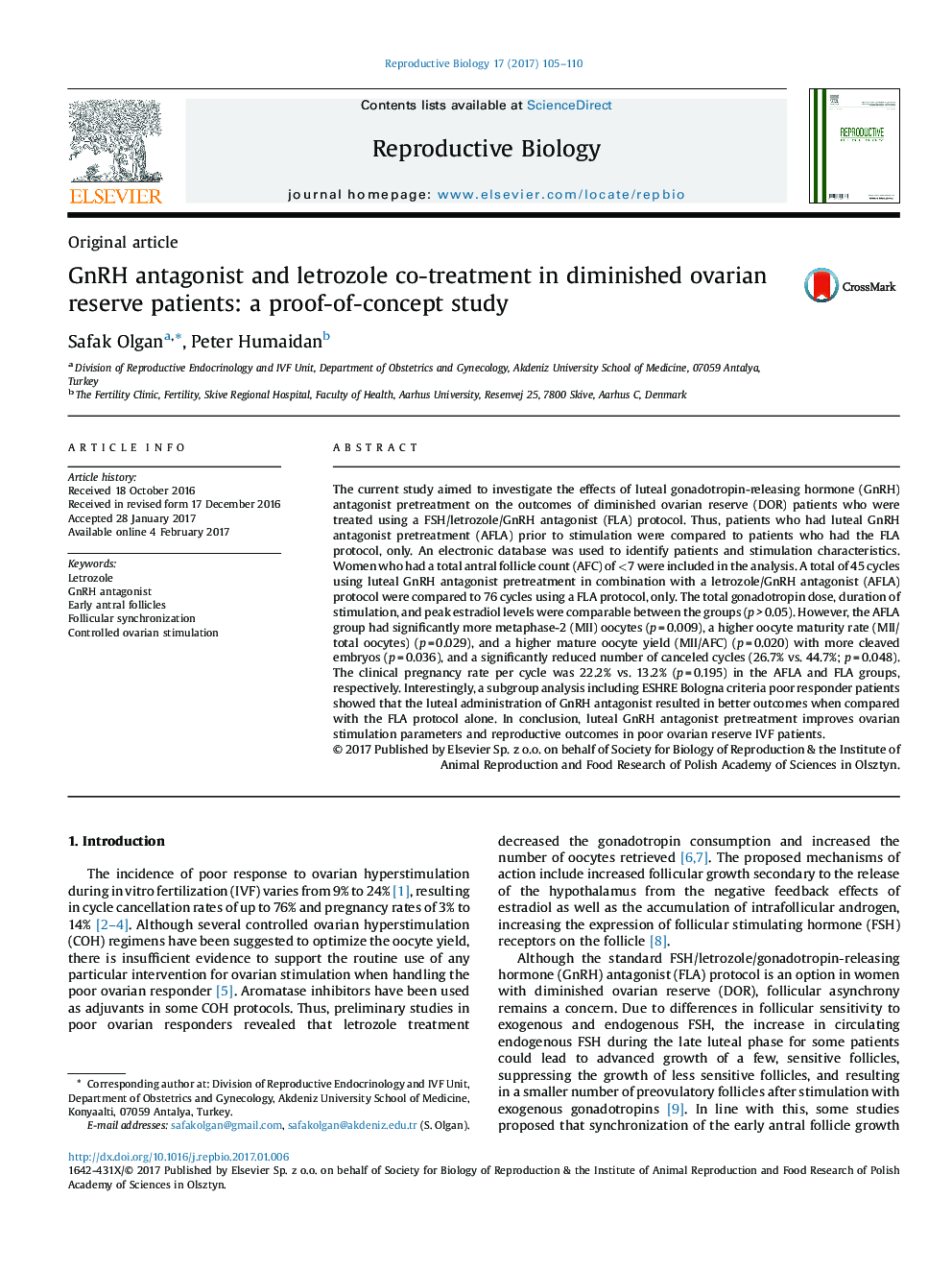| Article ID | Journal | Published Year | Pages | File Type |
|---|---|---|---|---|
| 5519045 | Reproductive Biology | 2017 | 6 Pages |
The current study aimed to investigate the effects of luteal gonadotropin-releasing hormone (GnRH) antagonist pretreatment on the outcomes of diminished ovarian reserve (DOR) patients who were treated using a FSH/letrozole/GnRH antagonist (FLA) protocol. Thus, patients who had luteal GnRH antagonist pretreatment (AFLA) prior to stimulation were compared to patients who had the FLA protocol, only. An electronic database was used to identify patients and stimulation characteristics. Women who had a total antral follicle count (AFC) of <7 were included in the analysis. A total of 45 cycles using luteal GnRH antagonist pretreatment in combination with a letrozole/GnRH antagonist (AFLA) protocol were compared to 76 cycles using a FLA protocol, only. The total gonadotropin dose, duration of stimulation, and peak estradiol levels were comparable between the groups (p > 0.05). However, the AFLA group had significantly more metaphase-2 (MII) oocytes (p = 0.009), a higher oocyte maturity rate (MII/total oocytes) (p = 0.029), and a higher mature oocyte yield (MII/AFC) (p = 0.020) with more cleaved embryos (p = 0.036), and a significantly reduced number of canceled cycles (26.7% vs. 44.7%; p = 0.048). The clinical pregnancy rate per cycle was 22.2% vs. 13.2% (p = 0.195) in the AFLA and FLA groups, respectively. Interestingly, a subgroup analysis including ESHRE Bologna criteria poor responder patients showed that the luteal administration of GnRH antagonist resulted in better outcomes when compared with the FLA protocol alone. In conclusion, luteal GnRH antagonist pretreatment improves ovarian stimulation parameters and reproductive outcomes in poor ovarian reserve IVF patients.
